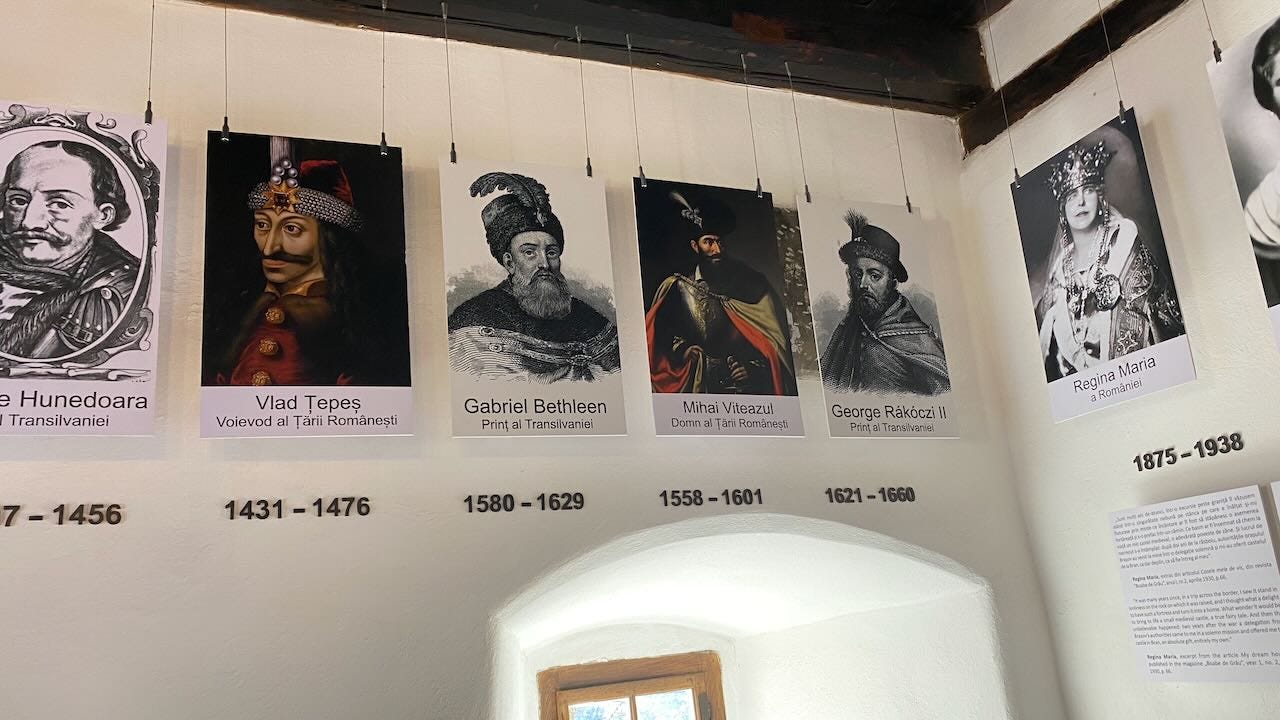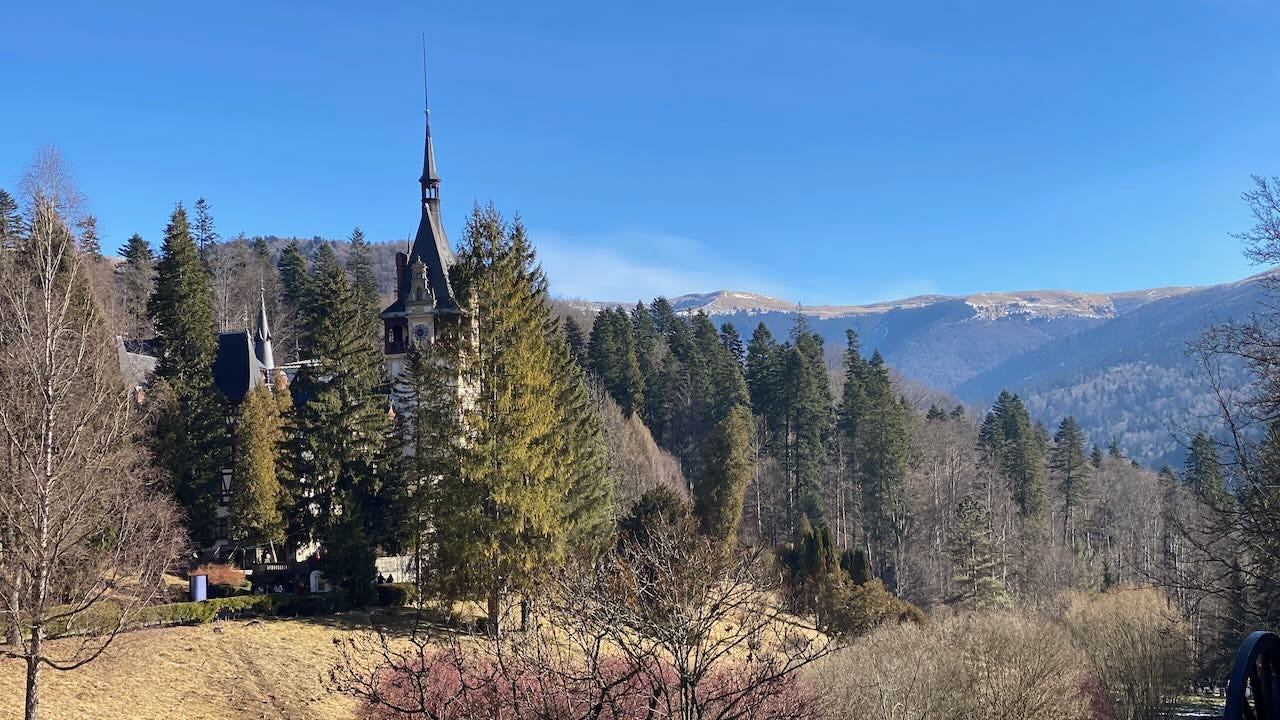Romania takes big bite out of fiction-fan tourism
Dracula may not be real, but neither is Mickey Mouse, so why not use a fictional character to draw visitors to the beauty of the Carpathian Mountains?
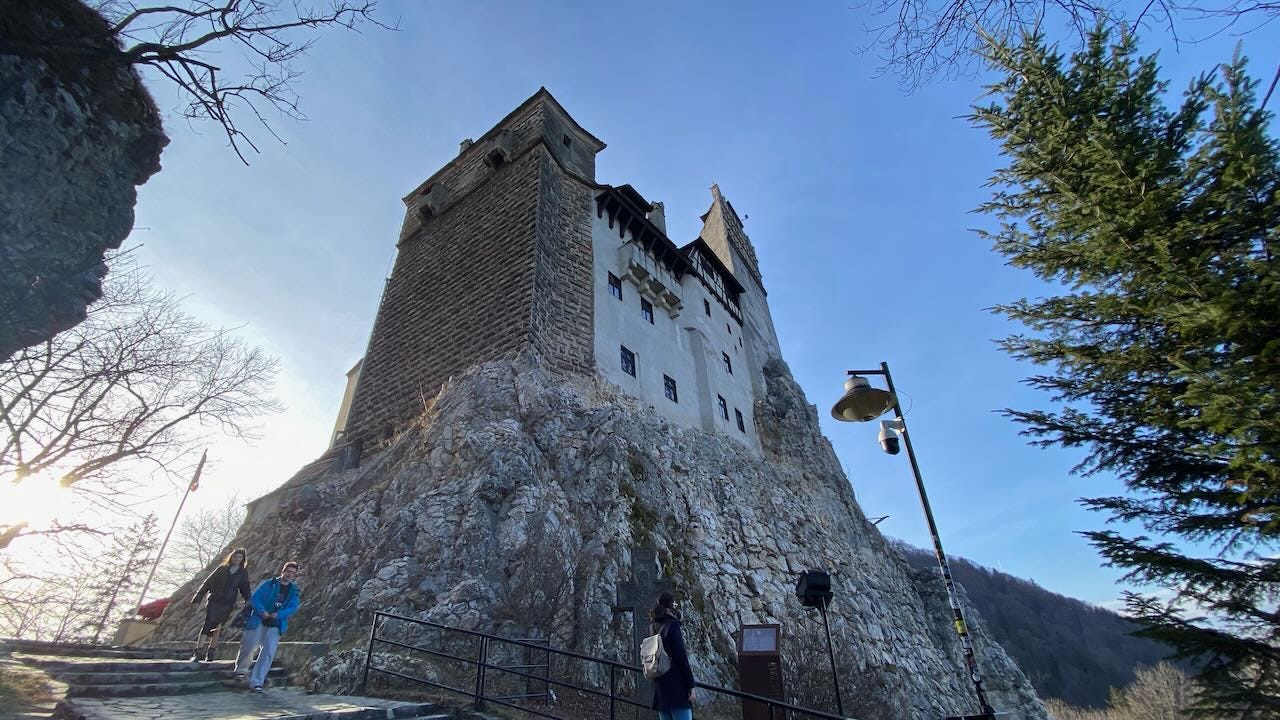
Okay, let’s get two things straight. One: the vampire Dracula is a work of fiction. I’m not saying all vampires are fiction, but Bram Stoker’s Dracula, while based in part on real places and real people, isn’t real. Never was. He is a figment of the active imagination of Stoker, who was Irish and therefore a natural bullshitter.
Sorry, storyteller. The Irish don’t lie, we tell stories. (My roots are mostly Irish, so I can get away with stereotyping my people, right?)
Anyway. Item two: The other Dracula (Vlad Draculea or Vlad Tepes, aka Vlad the Impaler) was real but there’s no evidence he ever visited “Dracula’s Castle" in Bran, Romania, let alone lived there. And need I say it? He was not a vampire. Though he did a lot of impaling, mostly of Saxons and Ottomans (people of the ancient Turkish empire, not the footrest furniture).
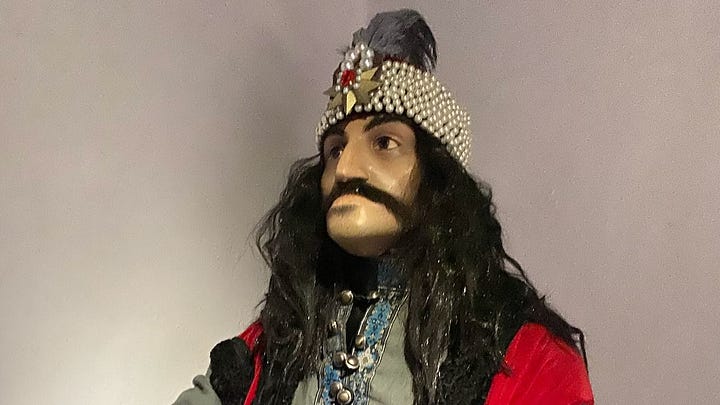
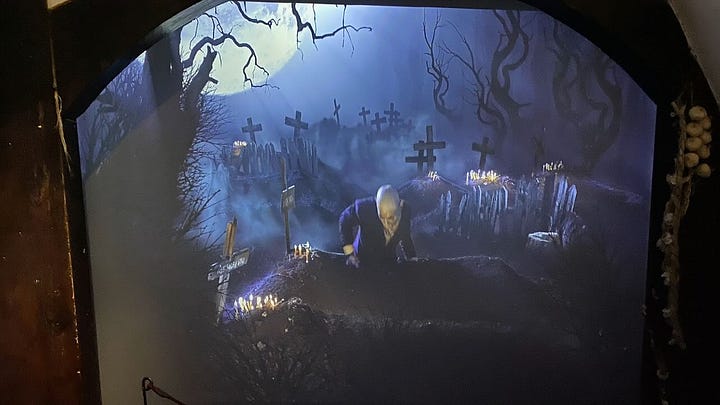
You don’t want to know what impaling involves, believe me. Let’s just say the literal “stakes” were really big and they were inserted where the sun don’t shine and then, taking care not to kill the victim, …. Anyway, Vlad was famous for using this as a way to frighten and demoralize enemies. And it worked really well, allowing him to maintain control over the southern Romanian territory of Walachia, where he ruled three separate times, as well as neighbouring Transylvania, which I gather he just terrorized.
Dracula means son of Dracul. Not so coincidentally, then, Dracul was Vlad’s dad, who got his name because he was a member of the Order of the Dragon. Conveniently for Stoker, the word dracul in Romanian means both dragon (the symbol of Vlad’s family line) and devil. And in Gaelic, Drac Ullah means bad blood. Talk about a perfect branding opportunity!
Anyway, that’s it for my little disambiguation exercise. Follow the links above for a fuller version of the fascinating and bloody history of 13th-century Eastern Europe.
⚜ ⚜ ⚜
But so what if Dracula’s not real and Vlad never slept at Bran castle? The Romanians have seized on the gothic horror tale as a way to draw tourists to the beautiful Carpathian Mountains, where villages like Bran and Sinaia offer the opportunity to visit castles whose real histories are just as riveting (and sometimes even more bloody) as the accounts of the Count.
From the capital of Bucharest, several agencies offer day trips (or longer) for visits to some of the settings described in Stoker’s well-researched fiction. The drive is about three hours each way and most excursions include three main stops: the Peles Castle in the ski town of Sinaia, the ancient village of Brasov, home to a lot of Vlad’s real-life horrors, and the so-called Dracula’s Castle in Bran, where an entire industry has sprung up around the real-life, late-life home of one of Romania’s most revered monarchs, Queen Marie.
I was really impressed by the agency I chose (they have a ton of positive reviews), so I’m happy to recommend One Excellence Tours, which in addition to the castle day-trip also offers multiple multi-day trips anywhere from Bucharest to Budapest. Our guide Marius was extremely knowledgable and passionate about the culture and history of Romania and kept us entertained the entire trip with stories about the comings and goings of the royal family prior to the Stalin-backed Communist takeover in 1945.
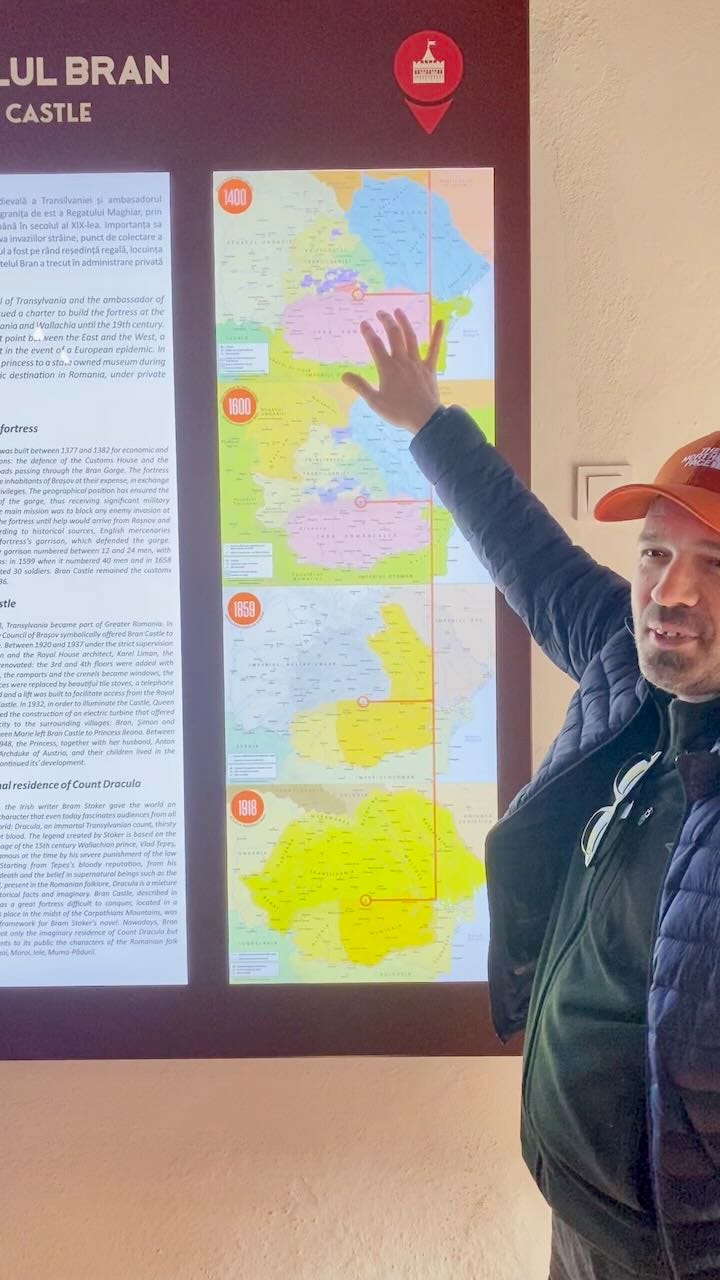
The drive from Bucharest to the mountains and back alone is worth the price of the ticket (40€ for the small group tour in a modern mini-van, castle entry fees not included). The views are stunning, but if you are sensitive to motion sickness, be ready for numerous switchback twists on the mountain roads.
First stop, Peles Castle in Sinaia, “also called the Pearl of the Carpathians. Tour the Romanian royal family’s former summer residence, which showcases a magnificent palace in the German Renaissance style. Built at the foot of the mountains between 1873 and 1914 by Carol I, the first Romanian king, the palace is considered one of the most beautiful of its kind in Europe.”
(Sorry for lifting that bit straight from the brochure, but why bother rewriting an already decent description?)
The first thing that hit me getting out of the van was how much the brisk winter air and the stunning views reminded me of the Laurentians back in Montréal. But what passes for a chateau back in Canada can’t hold a lumânare to the Romanian royals’ summer home.
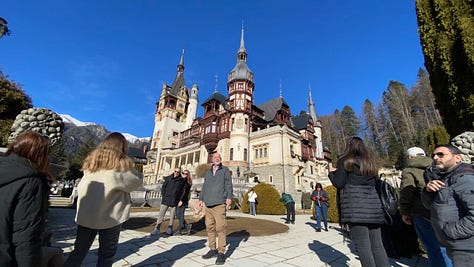
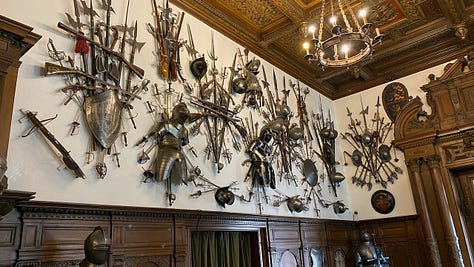
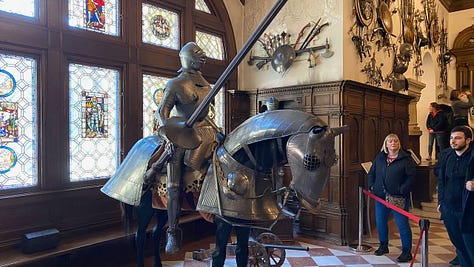
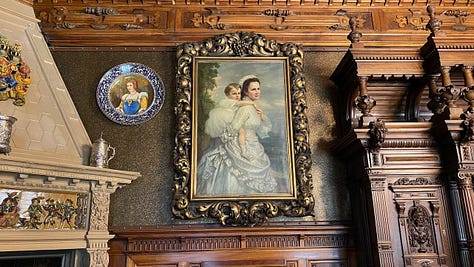
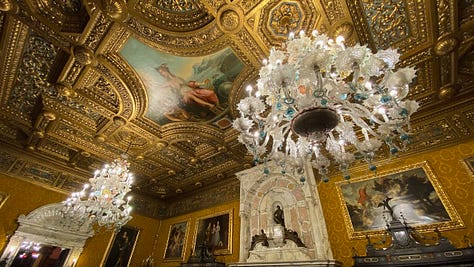
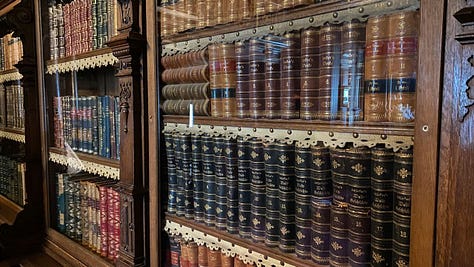
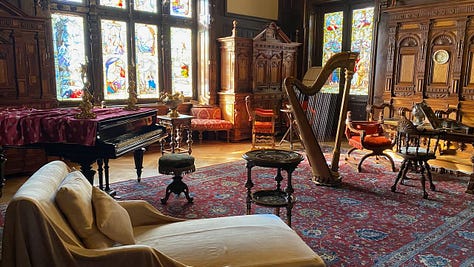
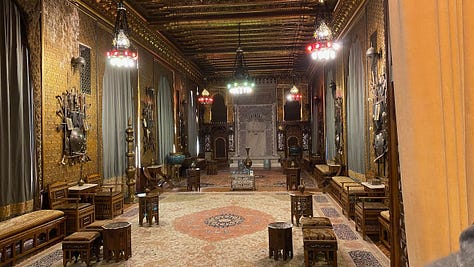
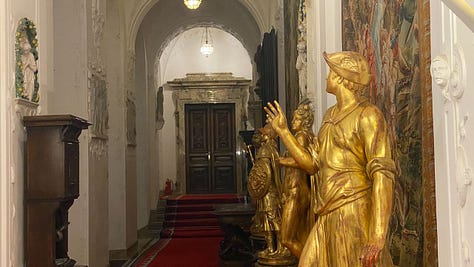
Marius managed to ensure our gang of eight was among the first tour group of the day to enter the castle, which gets crowded quickly, even on a Wednesday in February. His knowledge and his love for the castle was evident as we went from room to room, from armory to library to smoking lounge. It became clear quickly that, like many Romanians, he was also a big fan of Queen Elizabeth (no, the other one), who spoke six languages and was both a musician, artist and a prolific author of popular fiction.
Among the treats of the tour was a secret panel (not so well) hidden in the library that was never used for escapes, explained Marius, but often aided royal escapades of the extramarital sort.
(Video below is of the main entrance hall.)
With one last peek at the castle in the peaks, we headed for the town of Brasov, home of the “black church,” numerous impalings, and a communist-designed central square boasting a fountain so ugly that no one wants to sit near it. Not the highlight of our tour, it was mostly a lunch break where, thanks to a dearth of vegetarian fare on the menu, I tried my first taste of bulz with sour cream, a polenta so heavy that I had to buy it an extra seat on the van.
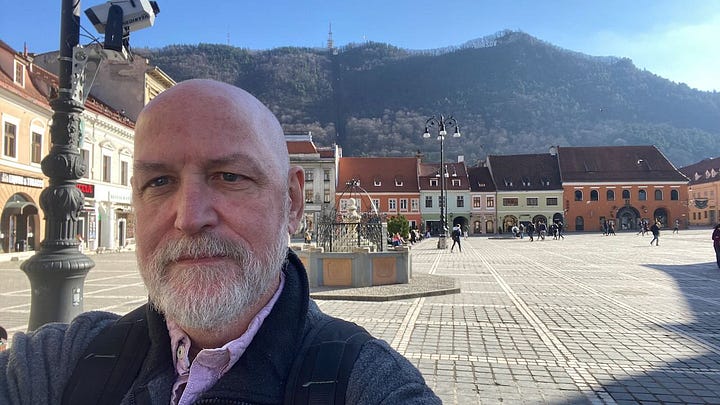
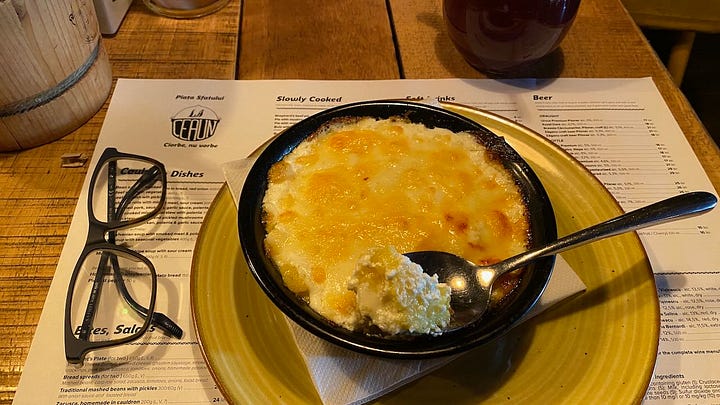
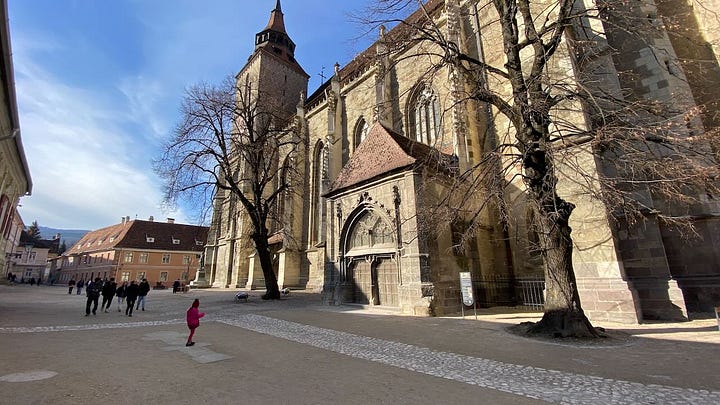
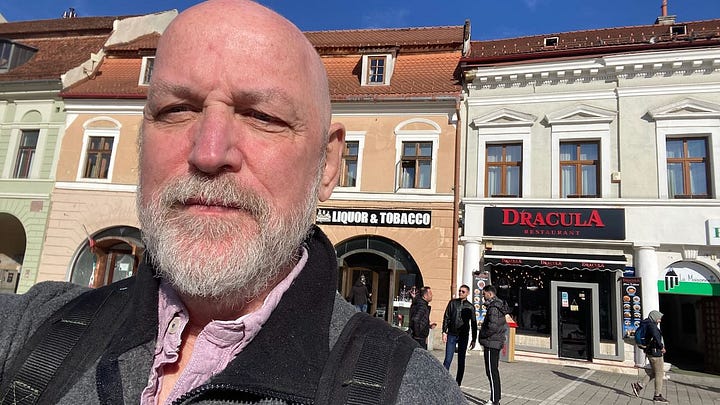
Compared to the rich splendour of Peles Castle, Marius was markedly less upbeat about the Dracula castle in Bran, which is considerably smaller and whose chambers are mostly quite simple. I found it pretty interesting, tho, with lots to see and absorb despite the lack of ornate art and furnishings. It was a favourite home for Queen Marie, after all, especially after she was forced to take a less public role after her eldest son, Carol II, became king in 1930. (Marie was a skilled diplomat who helped keep Romania allied with the French and English at the beginning of the First World War (no small feat, since her husband, King Ferdinand, was Prussian). Her efforts were also critical in reunifying the country following it.)
Like Elizabeth, Marie was another highly educated and accomplished outsider who embraced her new homeland with all her heart. In her passion for architecture, she oversaw the construction of the “dream homes” she designed at Pelisor, Cotroceni, Copăceni, Balchik, Scroviștea and Bran castles. But Bran was her favourite, a gift from the mayor to “the great queen who (…) spreads her blessing everywhere she walked, thus wining, with an irresistible momentum, the hearts of the entire country’s population.”
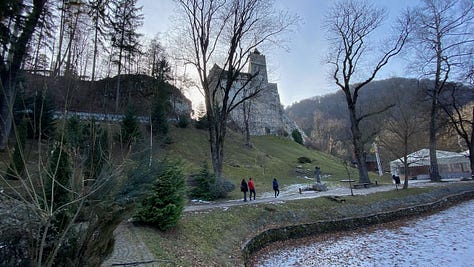
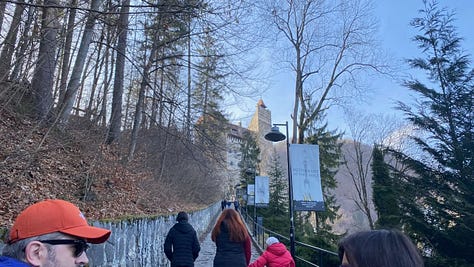
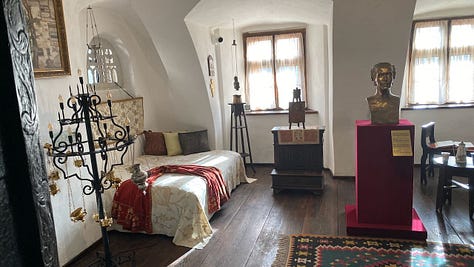
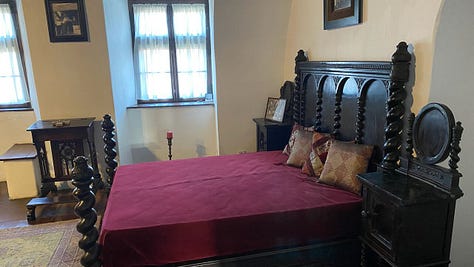
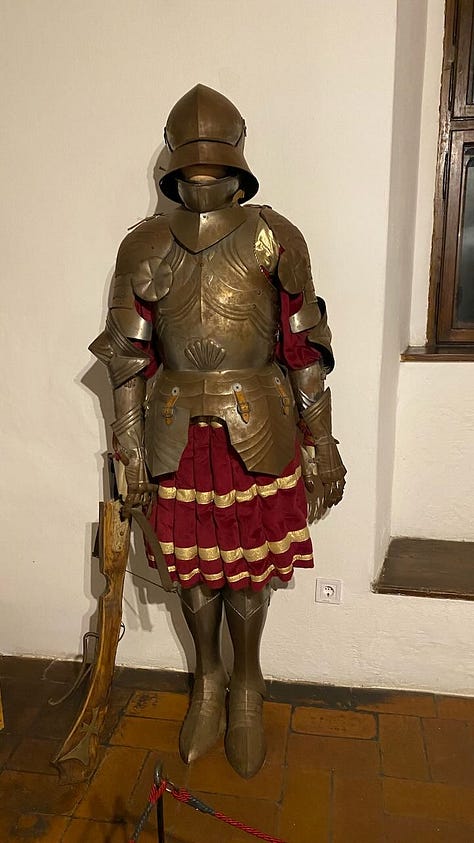
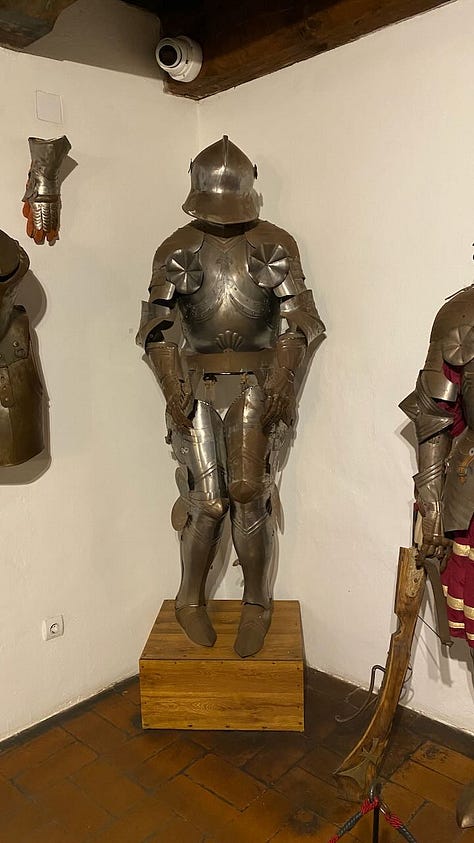
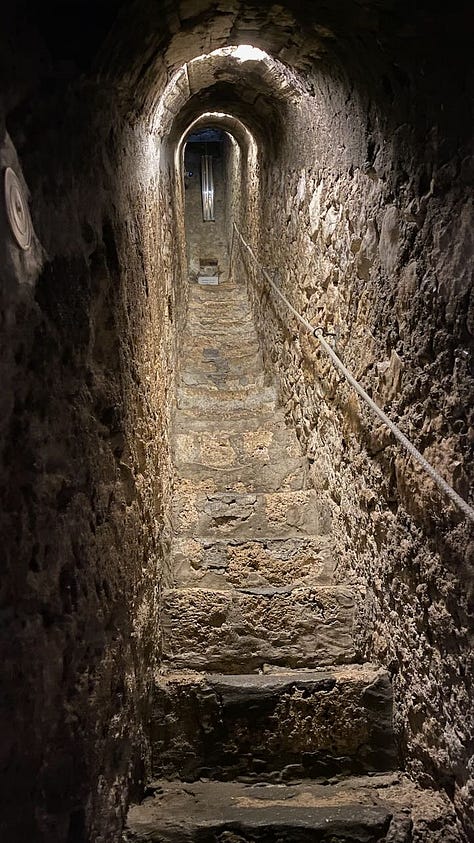
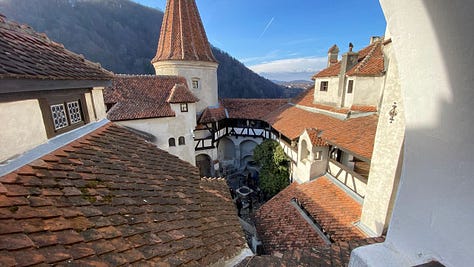
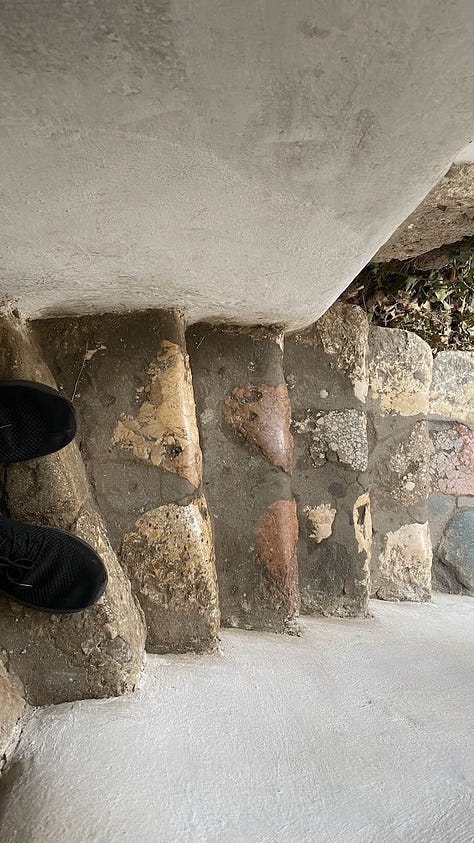
The Dracula aspect gets a subtle nod in a few displays inside the castle, but its mostly a museum dedicated to royal life of one of Europe’s most remarkable yet discreet pre- and post-war diplomats.
Anyway, Marie loved Bran and that’s a feeling that seems to be shared by 720,000 visitors a year. Some of whom don’t even believe in vampires!
Thanks once more for looking over my shoulder as I explore the beauty and mystery of romantic Romania. Vlad you could make it. I’m back in Toulouse now and I’m not sure what’s next, but I’ll be sure to invite you to tag along. À bientôt.





